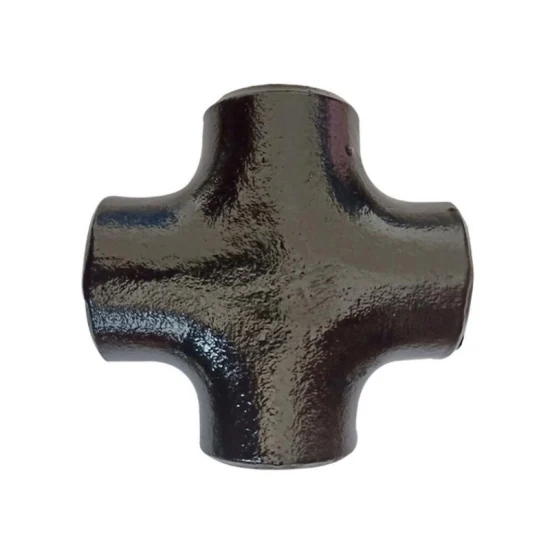-
Cangzhou Yulong Steel Co., Ltd.
-
Phone:
+86 13303177267 -
Email:
admin@ylsteelfittings.com
- English
- Arabic
- Italian
- Spanish
- Portuguese
- German
- kazakh
- Persian
- Greek
- French
- Russian
- Polish
- Thai
- Indonesian
- Vietnamese
- Zulu
- Korean
- Uzbek
- Hindi
- Serbian
- Malay
- Ukrainian
- Gujarati
- Haitian Creole
- hausa
- hawaiian
- Hebrew
- Miao
- Hungarian
- Icelandic
- igbo
- irish
- Japanese
- Javanese
- Kannada
- Khmer
- Rwandese
- Afrikaans
- Albanian
- Amharic
- Armenian
- Azerbaijani
- Basque
- Belarusian
- Bengali
- Bosnian
- Bulgarian
- Catalan
- Cebuano
- China
- China (Taiwan)
- Corsican
- Croatian
- Czech
- Danish
- Esperanto
- Estonian
- Finnish
- Frisian
- Galician
- Georgian
- Kurdish
- Kyrgyz
- Lao
- Latin
- Latvian
- Lithuanian
- Luxembourgish
- Macedonian
- Malgashi
- Malayalam
- Maltese
- Maori
- Marathi
- Mongolian
- Myanmar
- Nepali
- Norwegian
- Norwegian
- Occitan
- Pashto
- Dutch
- Punjabi
- Romanian
- Samoan
- Scottish Gaelic
- Sesotho
- Shona
- Sindhi
- Sinhala
- Slovak
- Slovenian
- Somali
- Sundanese
- Swahili
- Swedish
- Tagalog
- Tajik
- Tamil
- Tatar
- Telugu
- Turkish
- Turkmen
- Urdu
- Uighur
- Welsh
- Bantu
- Yiddish
- Yoruba

Dec . 01, 2024 18:35 Back to list
en1092
Understanding EN 1092 A Comprehensive Overview of Flange Standards
In the engineering and manufacturing industries, the significance of standards cannot be overstated. Among these standards, EN 1092 plays a vital role in ensuring the quality and compatibility of flanges used across various applications. This article delves into what EN 1092 is, its importance, and its implications in manufacturing processes.
What is EN 1092?
EN 1092 is a European standard that specifies the requirements for flanges, which are mechanical components used to connect pipes, valves, pumps, and other equipment. The standard encompasses various types of flanges, including welded neck flanges, slip-on flanges, blind flanges, and threaded flanges. EN 1092 defines the dimensions, tolerances, and materials used in the fabrication of these components.
The standard is divided into several parts, each addressing specific types of flanges and their respective applications. This modular design allows manufacturers and engineers to choose the appropriate specifications for their needs without confusion or overlap.
Importance of EN 1092
The importance of EN 1092 lies in its ability to ensure interoperability and reliability among various components in piping systems. By adhering to this standard, manufacturers can produce flanges that meet rigorous quality control measures, thus reducing the risks associated with failures in piping systems.
1. Interoperability One of the key advantages of standardization is the ease with which different components can be assembled. EN 1092 provides clear specifications for dimensions and materials, ensuring that flanges from different manufacturers can fit together without issues.
2. Safety and Reliability Flanges are critical in maintaining the integrity of piping systems under pressure. Standards like EN 1092 guarantee that the products can withstand the operational conditions, reducing the likelihood of leaks and catastrophic failures. This is particularly important in industries such as oil and gas, chemical processing, and water treatment, where safety is paramount.
3. Quality Control Compliance with the EN 1092 standard necessitates rigorous quality checks during production. Manufacturers are required to maintain consistent quality, which not only enhances the reliability of their products but also builds trust with customers.
en1092

Materials and Manufacturing
EN 1092 covers a variety of materials for flanges, including carbon steel, stainless steel, and various alloys. The choice of material affects not only the mechanical properties of the flange but also its resistance to corrosion and temperature variations.
Manufacturers must employ advanced technologies and methodologies to fabricate flanges that comply with EN 1092. Processes include forging, machining, and heat treatment, each of which must be carefully controlled to ensure the end product meets the specified standards.
Applications of EN 1092 Flanges
Flanges designed according to EN 1092 standards find applications in numerous fields
- Oil and Gas Industry Flanges play a critical role in pipelines and refineries, where high pressure and corrosive substances are involved. EN 1092 ensures the reliability and safety of these connections.
- Chemical Processing The chemical industry relies on flanges to prevent leaks in systems that handle hazardous and corrosive materials. Adherence to EN 1092 helps in ensuring the endurance of these flanges under extreme conditions.
- Water Treatment In municipal and industrial water systems, flanges must withstand varying pressures and conditions. EN 1092 flanges ensure that the systems remain leak-proof and efficient.
Conclusion
In conclusion, EN 1092 is more than just a standard; it is a cornerstone of safety and reliability in flange manufacturing and application. Its comprehensive guidelines support manufacturers in creating high-quality products that are compatible across various industries. As the demand for safer and more efficient piping systems continues to rise, the relevance of standards like EN 1092 will only increase, fostering innovation and quality in mechanical engineering. For engineers, contractors, and manufacturers, embracing these standards is not just a regulatory requirement but a commitment to excellence and safety in every project.
Latest news
-
ANSI 150P SS304 SO FLANGE
NewsFeb.14,2025
-
ASTM A333GR6 STEEL PIPE
NewsJan.20,2025
-
ANSI B16.5 WELDING NECK FLANGE
NewsJan.15,2026
-
ANSI B16.5 SLIP-ON FLANGE
NewsApr.19,2024
-
SABS 1123 FLANGE
NewsJan.15,2025
-
DIN86044 PLATE FLANGE
NewsApr.19,2024
-
DIN2527 BLIND FLANGE
NewsApr.12,2024
-
JIS B2311 Butt-Welding Fittings LR/SR 45°/90° /180°Seamless/Weld
NewsApr.23,2024











